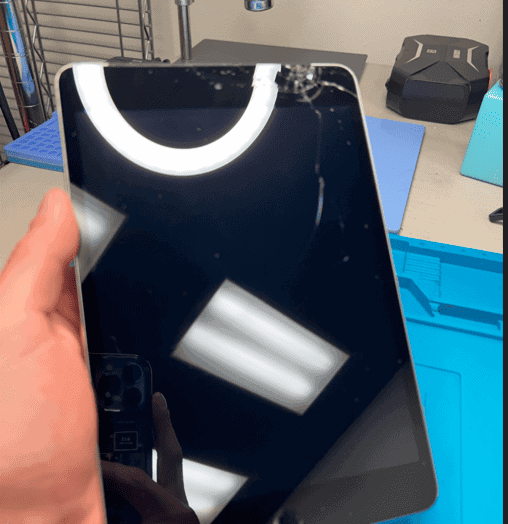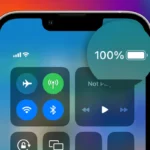If you’ve spent any time in tech circles or follow Apple news, you may have heard the term “Sherlocked” thrown around when discussing apps. But what exactly does it mean? And how does it impact developers and users?
Let’s break it down.
Origin of the Term “Sherlocked”
The phrase “Sherlocking” traces its roots back to the early 2000s. Apple had a macOS tool called Sherlock, which allowed users to search the web and their local files. Around the same time, a third-party developer released a utility called Watson that expanded on Sherlock’s features by offering plugins for things like stock prices, weather, and translation.
Shortly afterward, Apple released Sherlock 3, which incorporated many of Watson’s capabilities directly into macOS—effectively rendering Watson unnecessary. The term “Sherlocked” was born to describe this kind of move: when a platform owner (like Apple) integrates features from a third-party app into its operating system, potentially displacing or killing off the original app.
What It Means to Be Sherlocked Today
Today, “Sherlocking” an app refers to when a company—usually a platform owner like Apple, Google, or Microsoft—adopts features pioneered by a third-party developer and builds them directly into its own software or ecosystem. This can have serious implications for the original app:
- Users often prefer built-in functionality for convenience.
- The original developer may lose revenue, users, or the reason to continue development.
- In extreme cases, entire businesses have collapsed due to being Sherlocked.
Real-World Examples of Sherlocking
Here are some famous instances of Sherlocking in recent years:
1. Screen Time vs. Third-Party Tracking Apps
Before Apple introduced Screen Time in iOS 12, several apps like Moment and Offtime provided phone usage analytics. After Screen Time launched, many of these apps saw a sharp decline in users or were outright removed from the App Store due to Apple’s privacy policy changes.
2. Apple Maps and Google Maps
Apple launched Apple Maps in 2012 as a replacement for the default Google Maps app. While not a perfect example of Sherlocking, it shows Apple removing a third-party app (Google Maps) as the default in favor of its in-house version, which mimicked many core features.
3. AirTags and Tile
Tile was the go-to Bluetooth tracker for years, but Apple’s release of AirTags in 2021 brought a native alternative that used the vast “Find My” network, significantly eating into Tile’s market dominance.
4. Apple Wallet and Boarding Pass Apps
Apps like Passbook and others used to manage boarding passes and tickets. Apple integrated this functionality into Apple Wallet, eliminating the need for third-party alternatives.
Is Sherlocking Always a Bad Thing?
From a developer’s perspective, being Sherlocked can be devastating. Years of innovation and user trust can vanish overnight. However, from a user’s point of view, it’s often a net positive:
- Features are streamlined into the OS.
- There’s no need to download extra apps.
- Security and privacy may be better integrated.
Still, it raises concerns about fair competition, innovation, and the power platform owners wield over their ecosystems.
How Developers Try to Avoid Getting Sherlocked
While there’s no guaranteed way to prevent being Sherlocked, developers often:
- Focus on unique experiences or advanced features that go beyond what the platform provides.
- Build cross-platform apps to reduce dependence on one ecosystem.
- Innovate continuously to stay ahead of what the platform owner might copy.
- Create strong brand loyalty and community engagement.
Final Thoughts
Sherlocking is a byproduct of big tech ecosystems evolving and consolidating popular features. While it may benefit users in the short term, it raises important discussions about innovation, competition, and platform power.
For developers, being Sherlocked is both a risk and a strange badge of honor—it means your idea was good enough for Apple or Google to want it for themselves. But surviving that moment means staying nimble, creative, and always one step ahead.
How Long Does Apple Support iPads?

When it comes to technology, staying current with software is crucial. Apple recognizes this and offers an extensive period of support for its iPads. Typically, a new iPad will receive regular software updates for about five to six years. This includes both performance enhancements and security patches. Users can therefore expect their iPads to remain functional and secure for a decent amount of time after purchase.
Keeping an iPad updated ensures access to new features and maintains device security. Apple regularly releases updates to iPadOS, the operating system for iPads, which can extend the usability of the device. For instance, the iPad Air 2, released in 2014, was updated with iPadOS 15.7.9, demonstrating Apple’s commitment to support older models. This support allows users to enjoy a stable experience even years after their initial purchase.
After a certain period, Apple will eventually cease support for older models with the introduction of new operating systems. The move towards newer software, such as iPadOS 17, means that some previous iPad models no longer receive updates. Understanding this lifecycle helps users plan for their device’s longevity and consider upgrade options accordingly.
When considering how long Apple supports iPads, it’s important to understand a few key aspects: major iPadOS updates, security updates, and hardware service. Apple generally supports iPads with major software updates for 5-7 years, followed by additional security updates. This allows for a good lifespan and continued usability for most users.
1. Major iPadOS Updates
Apple doesn’t publicly announce a fixed lifespan for software support for specific iPad models. However, based on historical data, iPads generally receive 5 to 7 years of major iPadOS updates from their release date.
- What this means: During this period, your iPad will be able to upgrade to the newest version of iPadOS (e.g., from iPadOS 17 to iPadOS 18). These updates bring new features, interface changes, and performance improvements.
- Factors influencing this: Newer models, especially iPad Pro models with more powerful chips, tend to receive longer major OS support. Base model iPads and iPad Minis might see slightly shorter periods.
- Example: If an iPad was released in 2021, you could reasonably expect it to receive major iPadOS updates until around 2026-2028.
2. Security Updates
Even after an iPad stops receiving major iPadOS updates, Apple often continues to provide security updates for older iPadOS versions for an additional period.
- What this means: These updates are crucial for protecting your device from newly discovered vulnerabilities and keeping your data secure. You might not get new features, but your device will remain safer to use online.
- Duration: This period can vary, but it often extends for another 1-3 years after major OS updates cease.
3. Hardware Service and Parts
Apple has a policy for classifying products as “vintage” and “obsolete.”
- Vintage Products: Products that have not been sold for more than 5 and less than 7 years are considered vintage. Apple will continue to provide service and parts for vintage products for up to 7 years, subject to parts availability.
- Obsolete Products: Products that have not been sold for more than 7 years are considered obsolete. Apple discontinues all hardware service for obsolete products, with no exceptions.
How to Check Your iPad’s Support Status
While Apple doesn’t publish an official “end of life” date for each device, you can generally estimate its remaining support by:
- Finding your iPad model: Go to Settings > General > About > Model Name.
- Checking its release date: You can find this information online.
- Looking at current iPadOS compatibility: Apple usually lists compatible devices when a new iPadOS version is announced. If your iPad is no longer on that list, it’s likely nearing the end of its major OS update cycle.
When to Consider Replacing Your iPad
While your iPad might still function after it stops receiving major software updates, you might want to consider an upgrade if you notice:
- Lack of new features: You miss out on new functionalities introduced in the latest iPadOS.
- App compatibility issues: Newer apps may require a more recent iPadOS version.
- Performance slowdowns: Older hardware might struggle with demanding new apps or tasks.
- Security concerns: While Apple provides security patches for older OS versions, being on the latest major OS generally offers the best protection.
Key Takeaways
- Apple generally provides software updates for iPads for five to six years.
- Regular updates maintain the usability and security of iPads over time.
- Eventually, older iPad models will not support the latest iPadOS versions.
iPad Support Lifecycle
When buying an iPad, understanding its support lifecycle is crucial. This ensures the device will receive important software and security updates for a good length of time.
Understanding Apple’s Support Policy
Apple routinely provides updates to its iPads. These include both software features and security patches. iPads often receive updates for several years after their release. However, eventually, Apple marks older models as obsolete. When this happens, they no longer get updates.
Lifespan of Different iPad Models
The lifespan for software support for iPads varies. Typically, newer models get between five to seven years of updates. For example, the iPad Air 2 from 2014 and iPad mini 4 from 2015 became unsupported when Apple dropped iPadOS 15. It is wise to check the latest supported models to ensure updates.
Supported Models
- iPad Pro (2018, 2019, 2021, 2022)
- iPad Air (2019, 2020, 2022)
- iPad (2017, 2018, 2019, 2020, 2021, 2022)
- iPad mini (2019, 2021)
Unsupported Models
- iPad Pro (before 2018)
- iPad Air (before 2019)
- iPad (before 2017)
- iPad mini (before 2019)
Compatibility With iPadOS Updates
Apple’s operating system upgrades, like the move from iPadOS 15 to iPadOS 17, play a critical role in compatibility. Newer operating systems may drop support for older iPad models. iPad users should check compatibility before any software upgrade to avoid using an unsupported device.
Compatible Devices with Recent iPadOS:
- iPadOS 15: Supported iPad mini (2019), iPad Air (2019), iPad (2017) and later
- iPadOS 17: Supports iPad Pro (2018) and later models
Apple aims to give users a seamless experience with regular iPadOS updates. Users should take advantage of these to keep their devices secure and fully functional.
Maintaining and Extending iPad Usability
Apple iPads have a reputation for long-lasting quality and support. To make the most of an iPad’s life, users need to consider performance, battery health, and repair options.
Maximizing Performance and Battery Health
To keep an iPad running smoothly, update it with the latest iOS to secure new features and fix bugs. Regularly clear storage space by uploading old files to the cloud. Keep the screen brightness at a moderate level to save battery life. It helps to disconnect the charger once the battery hits 100% to maintain battery health.
Options for Repair and Replacement
When an iPad suffers damage, first look into repair options. The Apple Store offers services for screen and battery replacement. Users may also use Apple support to address common hardware issues. For out-of-warranty iPads, consider certified repair shops that use genuine Apple parts.
When to Consider Upgrading
Even with good care, iPads may slow down as they age. Check compatibility with the latest iPadOS to ensure the tablet still receives updates. If performance lags or new software features do not work, it might be time for a new iPad. This ensures access to the latest apps, security, and user experience.







